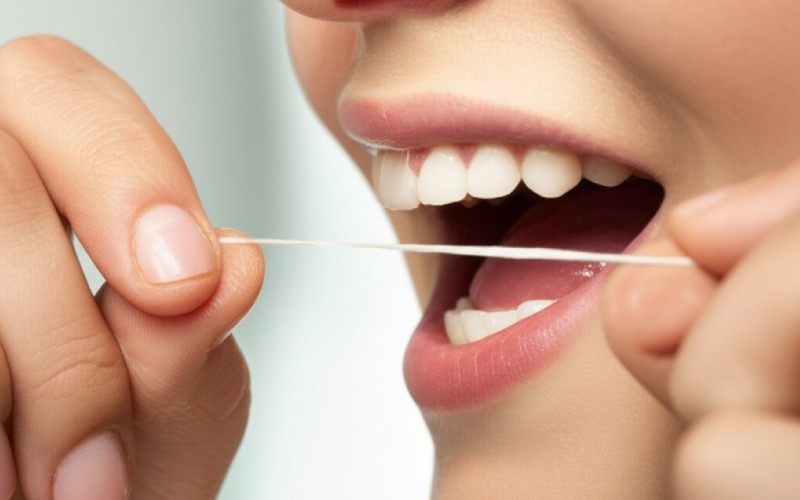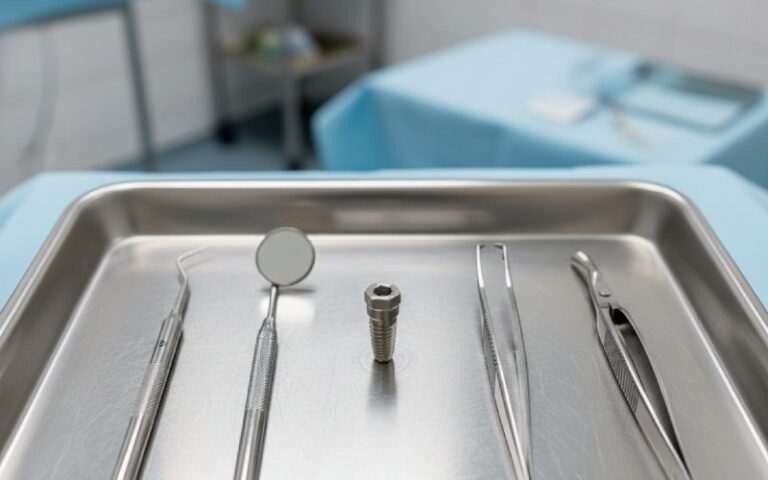
National Gum Disease Awareness Month: Enkle tips til at passe på dit tandkød
Taking care of your gums is one of the most important things you can do for your mouth and your overall health. This month is Gum Care Awareness Month, a perfect time to learn more. This article will give you simple care tips to keep your gums healthy. You will learn what gum disease is, how to spot it, and how to stop it. Reading this can help you keep your beautiful smile for life.
Indholdsfortegnelse
Why Do We Have a National Gum Disease Awareness Month?
You might wonder why we need a whole month for gum care. Well, a lot of people don’t know they have problems with their gum tissue until it’s very serious. National Gum Disease Awareness Month is a time to raise awareness about this common issue. It’s a chance for experts in dentistry to share information about gum disease and teach us how to protect ourselves. September is Gum Care Awareness month, a time to focus on our gum health.
The goal of Gum Disease Awareness Month is to increase public awareness. We want to help people understand the risks and learn how to take action. When we raise awareness about gum health, we help our friends and family avoid pain and serious problems later. This month is a reminder to pay attention to a key part of our oral health. Let’s use this time to learn and build good habits together.
What is Gum Disease, Really?
Gum disease is an infection of the tissues that hold your teeth in place. It’s a disease that affects your teeth and gums. It usually starts with a sticky, colorless film of bacteria called plaque. This plaque is always forming on your teeth. If you don’t remove it, it can harden into tartar, which is much harder to get rid of.
This buildup of bacteria attacks tooth enamel and gum tissue. The bacteria release poisons that make your gums red, swollen, and sore. This early problem is called gingivitis. If left untreated, it can turn into a more serious form of gum disease called periodontal disease. Understanding gum problems is the first step to a healthier mouth.
How Can I Know if I Have a Stage of Gum Disease?
It can be hard to know if you have gum disease because it is often painless at first. But there are symptoms of gum disease you can look for. One of the most common early signs is bleeding gums. Do your gums bleed when you brush or floss? This is not normal.
Other signs include red, swollen, or tender gums. You might also notice that your gums have pulled away from your teeth, making your teeth look longer. This is a receding gum line. Persistent bad breath, also known as halitosis, can be another sign. If you notice any of these things, you might be in a stage of the disease. Don’t ignore these clues. It’s a sign that your gums need help.

What Is Gingivitis?
Gingivitis is the mildest stage of gum disease. It is also the most common. With gingivitis, your gums might be red and swollen. They might bleed easily, especially during brushing or flossing. The good news is that gingivitis can be reversed. It has not yet started to attack the bone and tissue that support your teeth.
This early stage is caused by poor oral hygiene. When you don’t brush and floss well, plaque builds up along the gum line. Treating it is simple. You need to practice good oral hygiene every day. You also need to see a dentist for a professional cleaning. If you catch it early, you can stop gingivitis from getting worse.
Can Gum Disease Really Cause Tooth Loss?
Yes, absolutely. If gingivitis is not treated, it can advance to periodontitis. This is a much more serious form of gum disease. With periodontitis, the infection goes below the gum line. It gets into the bone and tissue that hold your teeth in place. Your body’s own defense system tries to fight the bacteria, but this fight can also break down the bone and tissue.
As the periodontal tissues are destroyed, pockets form between your teeth and gums. These pockets get deeper over time and fill with more bacteria. This causes your teeth to become loose. Eventually, if the damage is bad enough, your teeth can fall out. This is why tooth loss is a major risk of serious problems from gum disease. Preventing it is key to keeping your smile.
How Can I Prevent Gum Disease With Good Oral Hygiene?
The best way to prevent gum disease is with a great oral hygiene routine. It is simple and does not take a lot of time. The most important thing you can do is remove plaque every day. This means you need to brush your teeth at least twice a day. Use a soft-bristled toothbrush and fluoride toothpaste.
Flossing at least once a day is also vital. Floss gets into the small spaces between your teeth and under your gum line where your toothbrush can’t reach. A good daily oral hygiene routine disrupts the film of bacteria before it can cause problems. It is the best defense you have for achieving good gum health and a beautiful smile.
What Are the Best Tips for Gum Health?
Here are some great care tips to take care of your gums. First, practice proper brushing. Angle your brush at 45 degrees to the gum line and use gentle, circular motions. Don’t scrub too hard, as this can hurt your gums. When you floss, curve the floss around each tooth in a “C” shape and slide it gently under the gums.
You can also use an antiseptic mouthwash. It can help reduce plaque and kill bacteria. Eating a healthy diet that is rich in vitamins, especially Vitamin C, helps keep your gum tissue strong. Finally, avoid smoking. Smoking is one of the biggest factors for developing gum disease. Following these tips for gum care will help you get healthier gums.
Why Are Regular Dental Check-ups So Important for My Gums?
Even if you have a perfect oral care routine at home, you still need professional dental care. Your dentist and dental hygienist have special tools to remove hardened plaque, or tartar. You cannot remove tartar on your own with a toothbrush. This is why regular dental check-ups are so important.
Early detection is the key to stopping gum disease before it causes serious damage. During a check-up, your dental team will look for the early signs of trouble. They can find problems you might not see or feel. They provide information on gum health that is specific to you. Seeing your dentist regularly helps lower your risk of gum disease and protects your overall health.
What Happens When I Schedule an Appointment for My Gums?
If you suspect that you have gum disease, it is time to schedule an appointment. When you see your dentist, they will examine your teeth and gums. They may use a small ruler called a probe to measure the depth of the pockets around your teeth. This helps them determine the stage of gum disease.
If you have gum disease, your treatment may start with a deep cleaning procedure called scaling and root planing. During scaling, the dentist removes all the plaque and tartar from above and below the gum line. Root planing smooths the tooth roots to help your gums reattach to your teeth. Don’t wait. If you are worried, schedule your appointment today for better oral health.

How Can We Spread the Word and Take Care of Our Gums?
Now that you know more about gum care, you can help others. This National Gum Disease Awareness Month, let’s work together to help spread the word. Talk to your family and friends. Share what you have learned. You can post information about gum disease on social media to raise awareness about gum health. Let’s celebrate gum health by making it a priority.
Good dental health is a team effort. Encourage your loved ones to practice good oral hygiene and to get regular dental check-ups. The more we talk about it, the more we can fight this silent disease. Let’s work together to make sure everyone we care about can keep your gums healthy for a lifetime. Your mouth and your overall well-being will thank you.
Summary: What to Remember for Healthy Gums
- Gum disease starts with plaque and can lead to tooth loss if not treated.
- Look for signs like red, swollen, or bleeding gums.
- Gingivitis is the early, reversible stage of gum disease.
- Brush and floss every day to remove plaque and keep your mouth clean.
- Eat a healthy diet and avoid smoking to lower your risk.
- See your dentist for regular dental check-ups and cleanings for early detection.
- If you think you have a problem, schedule an appointment with your dentist right away.
- Spread the word during Gum Care Awareness Month to help others achieve good oral health.




